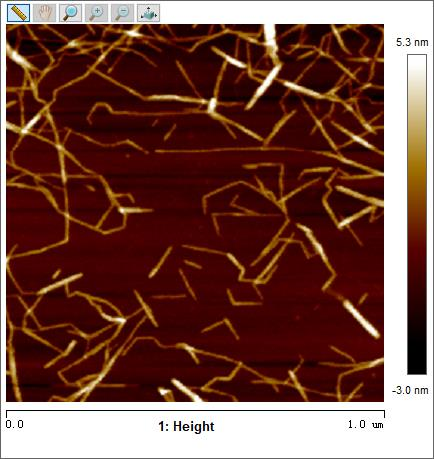News center
Select the category of information you want to see here
Here you can find the relevant content, pay attention to Jin Jiaohao green nano materials, to bring you more of our new dynamic
22
2024
-
04
What can nanocellulose be used?
Nanocellulose, as a cellulose material prepared at the nanoscale, has attracted much attention in recent years. Its unique properties give it a wide range of applications, involving biomedicine, textiles, food industry, environmental protection and other fields.
Nanocellulose, as a cellulose material prepared at the nanoscale, has attracted much attention in recent years. Its unique properties give it a wide range of applications, involving biomedicine, textiles, food industry, environmental protection and other fields. This article will explore the various uses of nanocellulose and reveal its important role in different fields.

1. biomedical applications
1. Preparation of medical supplies: Nanocellulose can be used to prepare various biodegradable medical supplies, such as band-aids, drug delivery systems and tissue engineering scaffolds. Due to their biocompatibility and degradability, these products can effectively reduce adverse effects on patients and promote tissue repair and regeneration.
2. Drug delivery system: Nanocellulose as a carrier of drug delivery system shows potential in drug delivery. Its high specific surface area and adjustable pore structure enable it to effectively load drugs and achieve controlled release of drugs, thereby improving the bioavailability and efficacy of drugs.
3. Biosensors: Nanocellulose can be used to prepare highly sensitive and selective biosensors for the detection of biomolecules, cells and pathogens. These biosensors are of great significance in medical diagnosis, disease monitoring and drug screening, and are expected to provide more accurate and reliable means for clinical diagnosis and treatment.
2. Textile Applications
1. High performance textile preparation: Nanocellulose can be used to prepare high performance textiles, such as sports clothing, waterproof coatings and antibacterial textiles. By compounding or surface modification with cellulose substrates, textiles can be endowed with excellent properties, such as antibacterial, waterproof, breathable and UV resistance, to meet the needs of different occasions.
2. Cellulose fiber modification: nanocellulose can be used as a modifier to improve the performance of cellulose fibers. By regulating the structure and morphology of nanocellulose, the strength, softness and wrinkle resistance of the fibers can be improved, thereby improving the quality and service life of textiles.
Development of smart textiles: The composite of nanocellulose and functional nanomaterials can realize the development of smart textiles, such as temperature-sensing textiles, optical textiles and electronic textiles. These smart textiles have the ability to sense and respond to changes in the environment and are expected to play an important role in areas such as smart clothing, smart healthcare and smart homes.
3. food industry applications
1. Food additives: Nanocellulose can be used as food additives to improve the texture, taste and stability of food. For example, the addition of nanocellulose can improve the stability of dairy products, reduce the crystallinity of ice cream, and increase the softness and moisture retention of bread and pastries.
2. Improvement of packaging materials: Nanocellulose can be used to prepare high-performance food packaging materials to improve food preservation and corrosion resistance. It has good gas barrier and humidity control, can effectively extend the shelf life of food, reduce food loss and waste.
3. Food nano sensor: nano cellulose can be used as the base material of food nano sensor, which can be used to detect trace components and harmful substances in food. These food nanosensors have the characteristics of high sensitivity, high selectivity and fast response, and can be used for food quality detection and safety monitoring to ensure food safety and consumer health.
4. Environmental Protection Applications
1. Water treatment technology: Nanocellulose can be used to prepare efficient water treatment materials, such as filter membranes and adsorbents, to remove harmful substances such as organic pollutants, heavy metal ions and microorganisms in water. These nanocellulose-based materials have high specific surface area and abundant active functional groups, which can achieve efficient purification and treatment of water quality.
2. Environmental pollution monitoring: Nanocellulose can be used as a sensor material for environmental pollution monitoring to detect pollutants in air, water and soil. Its high sensitivity and fast response characteristics can realize real-time monitoring and accurate identification of environmental pollution sources, and provide an important reference for environmental protection and governance.
3. Sewage treatment technology: Nanocellulose can be used to prepare efficient sewage treatment materials, such as adsorbents and biological carriers, for the removal of organic waste and microorganisms in sewage. Its large pore size and high specific surface area can improve the adsorption and biodegradation efficiency of sewage, so as to realize the efficient treatment and resource utilization of sewage.
5. Paper and Pulp Applications
1. Paper strength enhancement: Nanocellulose can be added to pulp to enhance the strength and hardness of paper. Its nano-scale fiber structure can fill the pores in the paper, increase the density and tightness of the paper, thereby improving the tensile strength and durability of the paper.
2. Surface modification of paper: Nanocellulose can be used as a surface modifier to improve the surface properties of paper. By forming a uniform nanocellulose coating on the surface of the paper, the smoothness, gloss and print quality of the paper can be improved, making it more suitable for high quality printing and coating.
3, environmental protection paper preparation: nano cellulose is biodegradable and renewable, can be used for the preparation of environmentally friendly paper and packaging materials. Compared with traditional wood pulp paper, nanocellulose paper has lower environmental impact and better sustainability, which meets the needs of modern society for environmentally friendly products.
Application of 6. Building Materials
1. Cement reinforcing agent: Nanocellulose can be added to cement as a reinforcing agent to improve the strength, durability and crack resistance of concrete. Its nano-scale fiber structure can effectively fill the micro-cracks and pores in cement-based materials to prevent the expansion of cracks and the shedding of concrete.
2. Concrete surface coating: Nanocellulose can be used as an additive for concrete surface coating to improve the surface performance of concrete. By forming a dense protective film, the weather resistance, abrasion resistance and impermeability of the concrete can be improved, and the service life of the concrete structure can be prolonged.
3. Development of thermal insulation materials: The composite of nanocellulose and other thermal insulation materials can realize the development of new thermal insulation materials for thermal insulation of buildings and industrial equipment. Its nanoscale fiber structure can effectively reduce heat conduction and heat radiation, improve the thermal insulation performance of the material, and reduce energy consumption and carbon emissions.
Apr 22,2024
How to judge the quality of nano cellulose?
As an important nanomaterial, nanocellulose shows a wide range of applications in many fields. However, how to accurately determine the quality of nanocellulose has become a difficult problem to be solved in scientific research and industrial fields.
Apr 22,2024
Preparation methods of nanocellulose: 4 categories and 8 specific preparation methods
Nanocellulose is a kind of cellulose material with nanoscale size, and its preparation methods are various. These methods include mechanical methods, chemical methods, biological methods and electrospinning methods. These preparation methods have their own characteristics and can obtain nano-scale cellulose materials.
Apr 22,2024
Nano-cellulose industry will have more and more broad prospects for development
Nanocellulose is a new type of material with superior mechanical properties and broad application prospects. With the continuous progress of science and technology, the application field of nano-cellulose is also expanding, which has become a research hotspot in the field of new materials.
Apr 22,2024
Nano cellulose market development potential
Nanocellulose is a fiber aggregate with a diameter of less than 100nm obtained by separation of natural cellulose. Cellulose is a macromolecular polysaccharide composed of glucose, which is the most widely distributed and content in nature. It is insoluble in water and general organic solution, and is the main component of plant cell wall.



